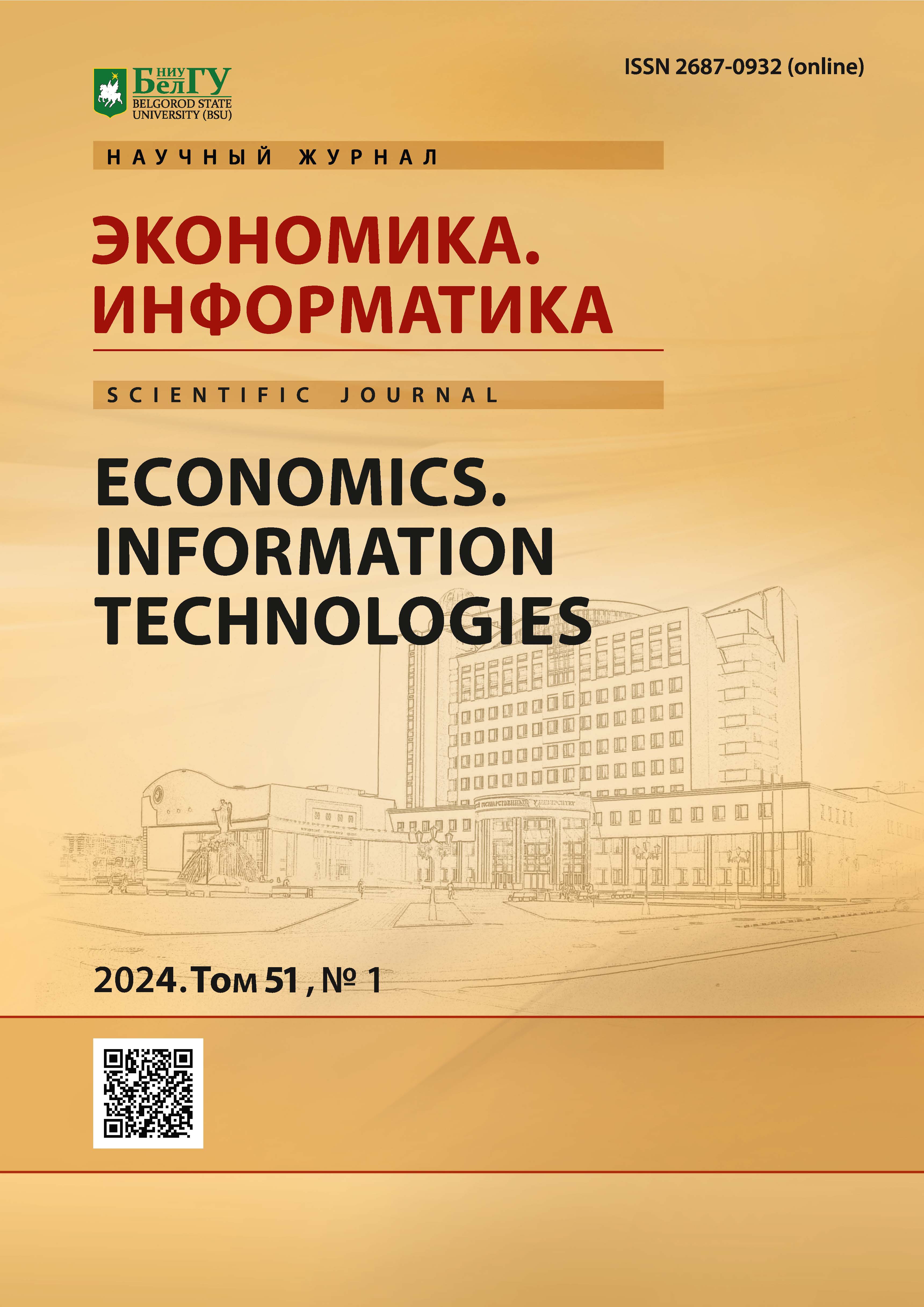Functional Modeling of Monitoring the State of Cryoproduct Storage Systems on the Example of Liquefied Natural Gas
DOI:
https://doi.org/10.52575/2712-746X-2024-51-1-157-168Keywords:
functional modeling, remote monitoring, tank container, non-drainage storage, heat and mass transfer, IDEF0, CFDAbstract
The issues of improving safety and reducing losses during storage and transportation of cryoproducts in storage systems of various types are considered. A functional model of a system for remote monitoring of the state of cryoproduct storage systems is presented. The task of the monitoring system is to provide remote monitoring of the state of cryoproduct storage systems, including the possibility to predict the time of non-drainage storage of cryoproduct based on computational modeling data. In considered scheme, the tasks of accumulating an array of operating parameters, which are usually determined using computational modeling, and calculating the current characteristics of a particular process in real time are functionally separated. The procedure for calculating non-stationary parameters of non-drainage storage is considered on the example of liquefied natural gas. Graphs of tank pressure changes at different values of the liquid level in the tank are presented. Using of the proposed functional model for monitoring the condition of cryogenic storage systems ensures that responsible persons are provided with current information on the parameters of non-drainage storage of cryogenic products in real time. This allows to take timely measures to prevent product losses during storage, as well as prevent the occurrence of an explosion and fire hazard.
Downloads
References
Архаров И.А. 2023. О необходимости возрождения криогенного машиностроения в России. Вестник Международной академии холода. № 1. С. 6–9.
Исмагилова В.С., Чекушина Т.В. 2023. Транспортировка трубопроводного и сжиженного природного газа: сравнительный анализ достоинств и недостатков. Науки о Земле и недропользование. Т. 46. № 1 (82). С. 61–71. DOI: 10.21285/2686-9993-2023-46-1-61-71.
Павлова О.Ю., Чекардовский С.М. 2022. Современные технологии и оборудование транспорта сжиженного природного газа в Российской Федерации. В сборнике: Нефтегазовый терминал. Материалы Международной научно-технической конференции. Тюмень. С. 108–113.
Ряжских В.И., Сумин В.А., Хвостов А.А., Журавлев А.А., Семенихин О.А. 2020. Численное моделирование термоконцентрационной конвекции в криогенных резервуарах. Математические методы в технике и технологиях – ММТТ-2020. Т. 5. С. 17–20.
Солдатов Е.С. 2019. Вычислительный алгоритм прогнозирования времени бездренажного хранения криопродуктов в стационарных и транспортных сосудах. Научные ведомости Белгородского государственного университета. Серия: Экономика. Информатика. 46(3). С. 485–495. DOI: 10.18413/2411-3808-2019-46-3-485-495.
Barsi S., Kassemi. M. 2008. Numerical and experimental comparisons of the self-pressurization behavior of an LH2 tank in normal gravity. Cryogenics 48(3): 122–129. DOI: 10.1016/j.cryogenics.2008.01.003.
Bo W., Ruoyin L., Hong C., et al. 2021. Characterization and Monitoring of Vacuum Pressure of Tank Containers with Multilayer Insulation for Cryogenic Clean Fuels Storage and Transportation. Applied Thermal Engineering. 187: 116569.
Chen L., Ai B., Chen S., Liang G. 2016. Simulation of Self-Pressurization in Cryogenic Propellant Tank. 12th International Conference on Heat Transfer, Fluid Mechanics and Thermodynamics: 1068-1073.
Huerta, F., Vesovic, V. 2021. CFD modelling of the isobaric evaporation of cryogenic liquids in storage tanks. International Journal of Heat and Mass Transfer, 176, 121419. DOI: 10.1016/j.ijheatmasstransfer.2021.121419.
Kang M., Kim J., You H., Chang. D. 2017. Experimental Investigation of Thermal Stratification in Cryogenic Tanks, Experimental Thermal and Fluid Science. DOI: 10.1016/j.expthermflusci.2017.12.017.
Kartuzova O.V., Kassemi M., Umemura Y., Kinefuchi K., Himeno T. 2020. CFD Modeling of Phase Change and Pressure Drop during Violent Sloshing of Cryogenic Fluid in a Small-Scale Tank. AIAA Propulsion and Energy 2020 Forum. DOI: 10.2514/6.2020-3794.
Lee D.-Y., Jo J.-S., Nyongesa A.J., Lee W.-J. 2023. Fatigue Analysis of a 40 ft LNG ISO Tank Container. Materials 2023, 16, 428. DOI: 10.3390/ma16010428.
Saufi A., Calabria R., Chiariello F., Frassoldati A., Cuoci A., Faravelli T., Massoli P. 2019. An experimental and CFD modeling study of suspended droplets evaporation in buoyancy driven convection. Chemical Engineering Journal, 375, 122006. DOI: 10.1016/j.cej.2019.122006.
Schlottke J., Weigand B. 2008. Direct numerical simulation of evaporating droplets. Journal of Computational Physics, 227(10): 5215–5237. DOI:10.1016/j.jcp.2008.01.042.
Soldatov E., Bogomolov A. 2021. Decision Support Models and Algorithms for Remote Monitoring of the Equipment State. CEUR Workshop Proceedings. Сер. "ITIDMS 2021 – Proceedings of the International Scientific and Practical Conference "Information Technologies and Intelligent Decision Making Systems"": 1–8.
Strotos G., Malgarinos I., Nikolopoulos, N., Gavaises, M. 2016. Predicting the evaporation rate of stationary droplets with the VOF methodology for a wide range of ambient temperature conditions. International Journal of Thermal Sciences, 109: 253–262. DOI: 10.1016/j.ijthermalsci.2016.06.022.
Soldatov E., Bogomolov A. 2022. Issues of energy-efficient storage of fuel in multimodal transport units. Smart Innovation, Systems and Technologies, 232: 393–402. DOI: 10.1007/978-981-16-2814-6_34
Yang W., Xia J., Wang X.Y., Wan K.D., Megaritis A., Zhao H. 2021. Predicting evaporation dynamics of a multicomponent gasoline/ethanol droplet and spray using non-ideal vapour-liquid equilibrium models. International Journal of Heat and Mass Transfer, 168, 120876. DOI: 10.1016/j.ijheatmasstransfer.2020.120876.
Abstract views: 230
Share
Published
How to Cite
Issue
Section
Copyright (c) 2024 Economics. Information Technologies

This work is licensed under a Creative Commons Attribution 4.0 International License.


